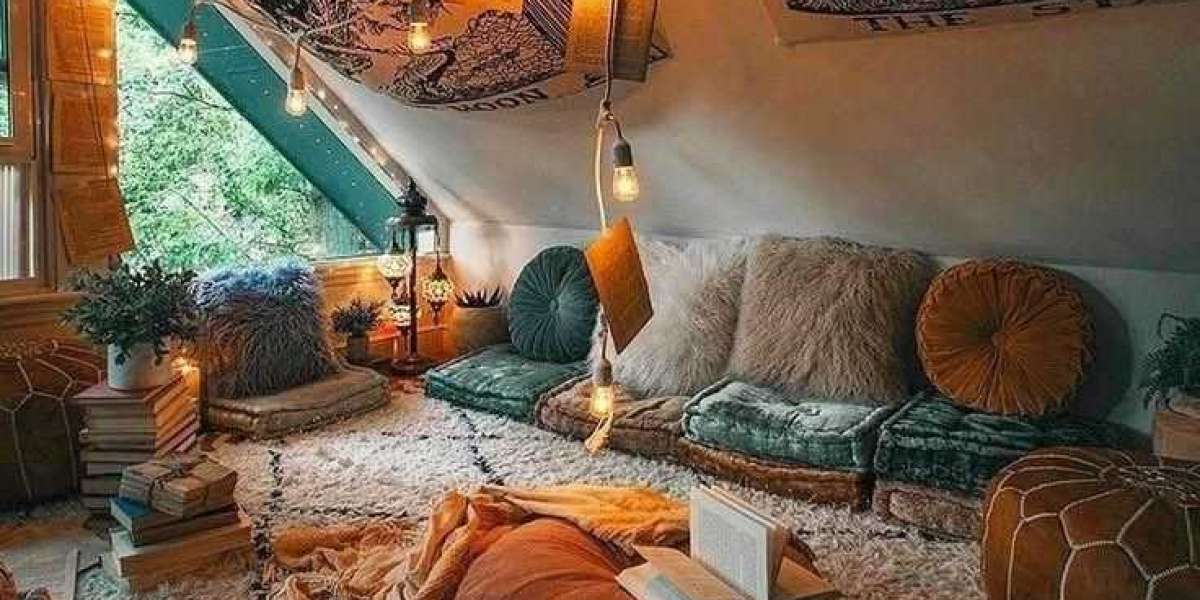The Power of Your Surroundings: A Scientific Perspective
Before we delve into the details of designing a spiritual room, let's first understand the significance of our surroundings on our mental and emotional well-being. Multiple studies have shown that our environment has a profound impact on our psychological state and can influence our thoughts, feelings, and behaviors. Here are some empirical insights:
Color Psychology: Colors have the power to evoke emotions and moods. For instance, calming colors like soft blues and greens can promote relaxation, while warm colors like red and orange can stimulate energy and passion. When designing your spiritual room, consider these color psychology principles to create the desired atmosphere.
Clutter and Stress: Research conducted by the Princeton University Neuroscience Institute found that clutter in our environment can lead to increased stress levels. A clutter-free spiritual room can help clear your mind and reduce anxiety.
Natural Elements: Exposure to natural elements, such as plants, sunlight, and natural textures, has been linked to improved mood and well-being. Incorporating these elements into your space can enhance its spiritual qualities.
Creating Your Spiritual Room: Practical Ideas
Now that we've established the importance of your surroundings, let's explore concrete ways to design your spiritual room:
Declutter and Simplify:
Begin by decluttering your space. Remove items that no longer serve a purpose or bring you joy.
Invest in storage solutions to keep your room organized and tidy.
Choose Calming Colors:
Use a color palette that resonates with your spiritual goals. Soft pastels, earthy tones, and neutrals are often preferred for their soothing effects.
Incorporate Natural Elements:
Add indoor plants to purify the air and bring nature indoors.
Use natural materials like wood and stone to create a grounding atmosphere.
Personal Altar or Meditation Corner:
Create a dedicated space for meditation, prayer, or reflection. Place meaningful objects, like candles or crystals, to enhance the energy of the area.
Mindful Decor:
Choose artwork and decor that inspire you spiritually. Symbols, mandalas, or serene landscapes can be particularly meaningful.
Lighting and Ambiance:
Install adjustable lighting to set the mood. Soft, warm lighting is ideal for creating a tranquil atmosphere.
Comfortable Seating:
Include comfortable seating, such as cushions or a cozy chair, for moments of quiet contemplation.
Soundscapes and Music:
Use soothing sounds or music to create an immersive experience in your spiritual room.
The Significance of a Personal Altar:
A personal altar is a focal point within your spiritual room, a place where you can connect with your inner self and the divine. Here are some ideas for creating a meaningful altar:
Select Meaningful Objects: Choose items that hold personal significance, such as crystals, religious symbols, or family heirlooms. Each object should evoke a sense of spirituality and reflection.
Candles and Incense: Lighting candles and incense can create an atmosphere of serenity and mindfulness. The gentle flicker of a candle can symbolize the light within you.
Sacred Texts or Journals: Include books or journals that inspire you spiritually. You can use this space for meditation, prayer, or writing down your thoughts and intentions.
Offerings: Some traditions involve offering items like water, flowers, or food as a symbol of gratitude and connection. This practice can deepen your spiritual experience.
Incorporating Mindfulness Practices:
A spiritual room is not just about aesthetics; it's a place for inner growth and self-discovery. To make the most of your space, consider incorporating mindfulness practices:
Meditation and Breathwork: Dedicate time to meditate in your spiritual room. Practice deep breathing and mindfulness to quiet your mind and find inner peace.
Yoga and Stretching: Use your space for gentle yoga or stretching exercises. This can help you align your body and spirit.
Daily Rituals: Establish daily rituals that align with your spiritual beliefs. Whether it's morning prayers, gratitude journaling, or setting intentions, consistency can deepen your connection.
Digital Detox: Make your spiritual room a technology-free zone. Disconnect from screens and distractions to fully immerse yourself in the present moment.
Conclusion:
In the hustle and bustle of everyday life, finding moments of serenity and inner peace is a precious gift we can give ourselves. Your spiritual room can be that haven, a sanctuary where you can escape the chaos, reconnect with your inner self, and nurture your spiritual well-being.
As we've explored in this guide, the design of your surroundings has a profound impact on your mental and emotional state. Drawing from scientific insights, we've provided practical spiritual room ideas that range from decluttering and selecting calming colors to creating a personal altar and embracing mindfulness practices.
Remember that your spiritual room is a reflection of your unique journey. It's a canvas upon which you can paint the colors of your soul, a space where you can explore your spirituality, and a retreat where you can find solace. So, take these ideas, adapt them to your preferences, and embark on the journey of crafting a spiritual room that resonates with your heart and spirit. With each intentional choice you make, you're not just transforming a room; you're nurturing the essence of your being and sowing the seeds of inner harmony and self-discovery.





